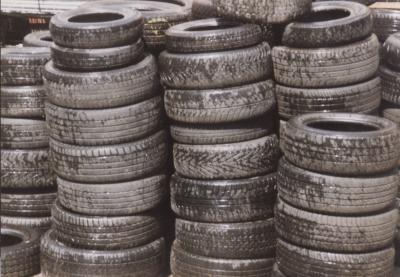Proper treatment of end-of-life tyres (ELTs) is essential to recover valuable materials of which tyres are made, namely rubber, steel and textiles. A new peer-reviewed study, based on Life Cycle Assessment (LCA) meeting ISO 14040 and ISO 14044 standards, made by the Danish FORCE Technology Institute and the German ifeu – Institut für Energie- und Umweltforschung Heidelberg GmbH[1] demonstrates that mechanical recycling of ELTs into infill for artificial pitches is, by far, the most sound treatment option in terms of circularity and climate benefits.
The LCA study shows that the mechanical recycling of an average of 400,000 tonnes of ELTs processed into infill for artificial turf – when compared with energy recovery – spares the environment 280,000 tonnes of CO2 emissions annually in the EU. To give an order of magnitude, ELT recycling as infill into artificial turfs offsets greenhouse gases emissions (GHS) comparable to the amount of GHS absorbed by 140,000 hectares (approx. 250 million trees) of forest land in the EU[2].
In Europe, more than 3 million tonnes of ELTs are generated annually. From these ELTs, it is estimated that around 60% are used in material recovery applications. This means that almost 40% of the discarded tyres mostly follow a linear economy model, involving combustion for energy recovery which generates greenhouse gases emissions, posing an environmental concern especially when those tyres are exported to non-EU countries with less stringent environmental legislation.
In contrast with co-incineration, mechanical tyre recycling yields a valuable greater amount of raw materials for other processes, raw materials that otherwise are often extracted and imported from outside Europe. From those ELTs going through material recovery, 400.000 tonnes are upcycled per year to be used as infill in artificial turf pitches in EU + United Kingdom + Norway. Artificial turf pitches represent one of the main market applications for rubber granulate from ELT and it is present in approx. 75-80% of European artificial turf pitches.
ELT-derived synthetic turf systems offer significant benefits to society due to their ability to sustain intensive use throughout the years in most weather conditions. They are also meeting the highest standards in terms of players’ safety by minimizing the risk of injuries, of skin burns and abrasions (e.g., strained ankles and knee injuries). Furthermore, ELT-derived infill is known to be among the best materials regarding physical and sport performance (i.e., elasticity and durability) as well as in terms of sustainability, having a low carbon footprint in comparison with other alternatives.
The new LCA study confirms the positive climate and environmental footprint of mechanical tyre recycling when compared to co-incineration. On average, for each tonne of end-of-life tyres processed into ELT rubber and used as infill in artificial turf pitches, the climate is spared 700 kg of CO2 equivalents, confirming that ELT recycling supports the overarching objectives set in The European Green Deal to speed up the transition towards a circular economy and achieve climate neutrality by 2050
As the Committee for Risk Assessment (RAC) of the European Chemicals Agency (ECHA) has recently expressed a preference for a complete ban with a transitory period for ELT-derived infill in relation to the ongoing assessment of the restriction on intentionally added microplastics, EuRIC MTR looks forward to bringing further evidence that standardized risk management measures can effectively prevent the release of microplastics from rubber granulate into the environment to preserve a sound use of recycled materials offering substantial societal and climate benefits.










